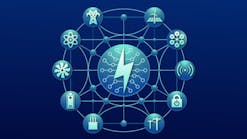On July 28, U.S. President Joe Biden and the bipartisan group announced agreement on the details of a once-in-a-generation investment in the United States' infrastructure, which was immediately taken up in the Senate for consideration. The legislation includes around US$550 billion in new federal investment in the country's power infrastructure, roads and bridges, electric vehicle (EV) infrastructure, water infrastructure, and more. The bipartisan Infrastructure Investment and Jobs Act is set to help the economy flourish, enhance competitiveness, create jobs, and make the country’s economy more sustainable, resilient, and just.
The bipartisan Infrastructure Investment and Jobs Act helps the United States tackle the climate crisis by making the largest investment in clean energy transmission and EV infrastructure in history, electrifying thousands of school and transit buses across the country and creating a new Grid Deployment Authority to build a resilient, clean, 21st-century electric grid.
America’s transit infrastructure is inadequate — with a multibillion-dollar repair backlog, representing more than 24,000 buses, 5000 rail cars, 200 stations, and thousands of miles of track, signals, and power systems in need of replacement. The legislation will enable the replacement of thousands of transit vehicles, including buses, with clean, zero-emission vehicles through an additional US$5.75 billion, of which 5% is dedicated to training the transit workforce to maintain and operate these vehicles. Moreover, it will benefit communities of color because these households are twice as likely to take public transportation and many of these communities lack sufficient public transit options.
EV Infrastructure
U.S. market share of plug-in EV sales is only one-third the size of the Chinese EV market. President Biden believes that must change. The bill invests US$7.5 billion to build out the first-ever national network of EV chargers in the United States and is a critical element in the Biden-Harris Administration’s plan to accelerate the adoption of EVs to address the climate crisis and support domestic manufacturing jobs. The bill will provide funding for deployment of EV chargers along highway corridors to facilitate long-distance travel and within communities to provide convenient charging where people live, work, and shop. Federal funding will have a particular focus on rural, disadvantaged, and hard-to-reach communities.
Electric Buses
American school buses play a critical role in expanding access to education, but they are also a significant source of pollution. The legislation will deliver thousands of electric school buses nationwide, including in rural communities, helping school districts across the country buy clean, American-made, zero emission buses, and replace the yellow school bus fleet for America’s children. The legislation also invests US$5 billion in zero emission and clean buses and US$2.5 billion for ferries. These investments will drive demand for American-made batteries and vehicles, creating jobs and supporting domestic manufacturing, while also removing diesel buses from some of the country's most vulnerable communities. In addition, they will help the more than 25 million children and thousands of bus drivers who breathe polluted air on their rides to and from school. Diesel air pollution is linked to asthma and other health problems that hurt communities and cause students to miss school, particularly in tribal communities and communities of color.
Power Infrastructure
As the recent Texas power outages demonstrated, our aging electric grid needs urgent modernization. A Department of Energy study found that power outages cost the U.S. economy up to US$70 billion annually. The legislation’s roughly US$65 billion investment includes the single largest investment in clean energy transmission in American history. It upgrades the country's power infrastructure, including by building thousands of miles of new, resilient transmission lines to facilitate the expansion of renewable energy. It creates a new Grid Deployment Authority, invests in research and development for advanced transmission and electricity distribution technologies, and promotes smart grid technologies that deliver flexibility and resilience. It invests in demonstration projects and research hubs for next generation technologies like advanced nuclear, carbon capture, and clean hydrogen.


